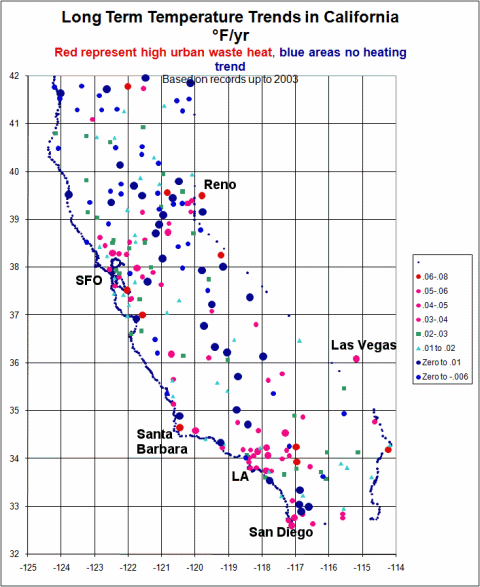 Automatic Weather Stations (AWS) collect temperature, humidity and atmospheric pressure (and wind direction and velocity in some locations) from various locations throughout the world. Data from this system is used to record, and subsequently extrapolate, climate patterns. But is there a problem with the accuracy of the data collected by individual AWS installations because of localized urban conditions and features? Can smoke from a nearby BBQ distort readings? Can air conditioner exhaust distort them? Can heat from asphalt?
Automatic Weather Stations (AWS) collect temperature, humidity and atmospheric pressure (and wind direction and velocity in some locations) from various locations throughout the world. Data from this system is used to record, and subsequently extrapolate, climate patterns. But is there a problem with the accuracy of the data collected by individual AWS installations because of localized urban conditions and features? Can smoke from a nearby BBQ distort readings? Can air conditioner exhaust distort them? Can heat from asphalt?
Image: a remote weather observation unit – click for larger image.
In what might be a major contamination of weather data, weather sensors can be influenced by the effects of surrounding human activity and artifacts. These factors will skew the data in some locations because of unnatural heating and distortion of natural climatic conditions. If you bias temperature readings in some locations, it would be impossible to rely on that data unless it has been normalized to data collected in undeveloped areas.
A Northern California blog, What’s Up With That?, identifies four cases where Urban Heat Island (UHI) effects are likely distorting temperature data.
How Not To Measure Temperature discusses a sensor located in Marysville, CA, adjacent to a fire station and how blacktop heating, air conditioner exhaust and a fire house BBQ would distort readings.
How Not To Measure Temperature – Part 2 shows problems with a Redding, CA weather station located at the airport in that town.
How Not To Measure Temperature – Part 3 speaks of distorted data from Forest Grove OR with a weird twist about the attempted firing of Oregon State Climatologist George Taylor by Oregon’s Governor, for not buying into the man-made global warming hype.
Regarding the Royal Observatory at Edinburgh, Scotland, Watts asks if top scientists shouldn’t know better than to rely on “urbanized” data.
Finally, a map of California weather stations reveals a pattern where you can draw your own conclusions. After forty years of flying experience much of it over the state of California, I am familiar with its topology. I noticed right away the urban warming and absence of warming in rural and unpopulated areas.

Hat tip to my colleague, Rick, for pointing out Watt’s articles.
